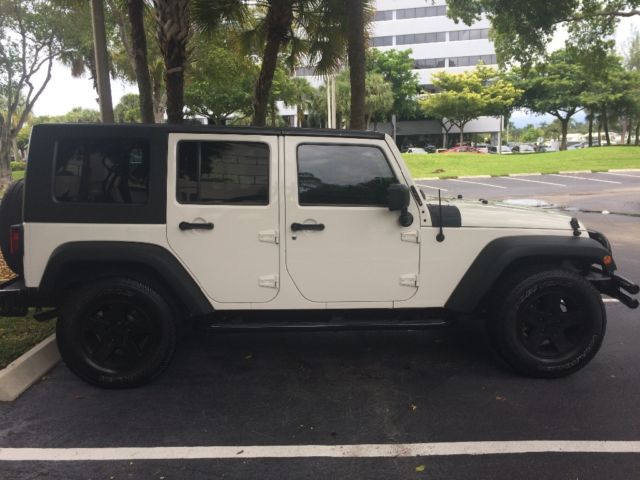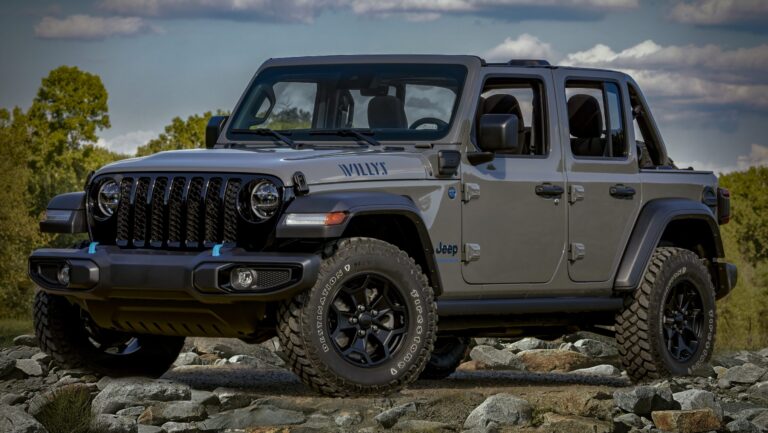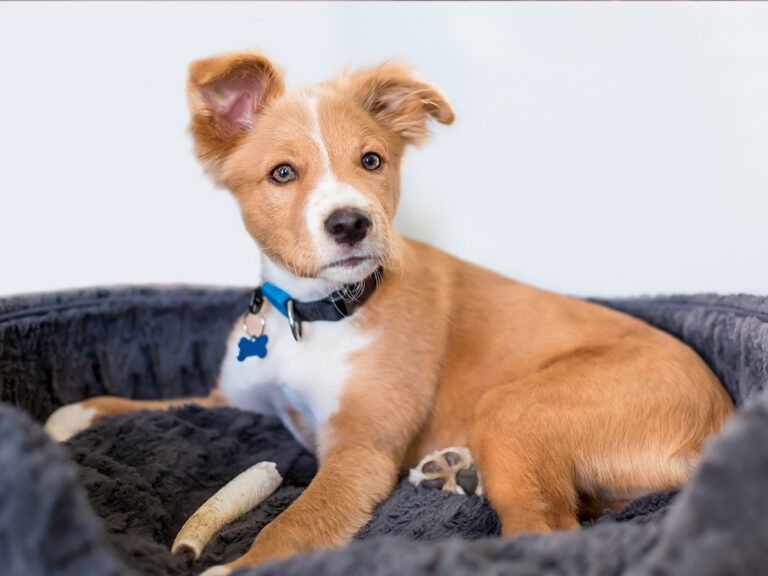Jeep Wrangler Unlimited Hardtop: The Ultimate Guide to Rugged Versatility
Jeep Wrangler Unlimited Hardtop: The Ultimate Guide to Rugged Versatility jeeps.truckstrend.com
The Jeep Wrangler Unlimited is a vehicle synonymous with adventure, freedom, and unparalleled off-road capability. While its iconic open-air experience with a soft top is celebrated, a significant portion of its appeal, and often its practicality, lies in the Jeep Wrangler Unlimited Hardtop. More than just a roof, the hardtop transforms the Wrangler into a year-round, all-weather companion, enhancing security, comfort, and the overall ownership experience. This comprehensive guide delves into every facet of the Jeep Wrangler Unlimited Hardtop, from its design and benefits to practical removal tips and essential maintenance.
Understanding the Jeep Wrangler Unlimited Hardtop
Jeep Wrangler Unlimited Hardtop: The Ultimate Guide to Rugged Versatility
The Jeep Wrangler Unlimited Hardtop, particularly the "Freedom Top" found on modern JL and JK generations, is a multi-piece, removable roof system typically constructed from durable fiberglass-reinforced plastic (FRP). Unlike a traditional fixed roof, its segmented design allows owners to enjoy varying degrees of open-air freedom without fully committing to a soft top. It’s a crucial component that bridges the gap between the Wrangler’s legendary open-air heritage and the demands of everyday driving in diverse climates, offering a balance of protection, security, and the rugged aesthetic that defines the Jeep brand. For many, it’s not just an accessory but a fundamental part of what makes the Unlimited truly "unlimited" in its capabilities.
Design, Features, and Unrivaled Benefits
The hardtop’s design is a testament to Jeep’s commitment to both utility and user experience. Most modern hardtops are a three-piece system: two lightweight "Freedom Panels" above the front seats and a larger rear section covering the cargo area and rear passengers.
Key Design Features:
- Material: Primarily fiberglass-reinforced plastic (FRP), chosen for its durability, rigidity, and relatively light weight (compared to steel).
- Modularity: The three-piece design allows for quick removal of the front panels for a "sunroof-like" experience, or the entire top for a full open-air ride.
- Rear Window: Includes a large, hinged rear window, often equipped with a defroster, wiper, and washer system, enhancing visibility and practicality in inclement weather.
- Sound Damping: Many hardtops, especially premium versions, include headliners or additional insulation to reduce road noise and improve cabin acoustics.

Unrivaled Benefits:
- Enhanced Security: A hardtop offers significantly better security against theft and vandalism compared to a soft top. Its rigid structure is much more difficult to breach, protecting your belongings and the vehicle itself.
- Superior Weather Protection: From torrential downpours and heavy snowfalls to scorching sun and biting winds, the hardtop provides robust protection. It seals the cabin effectively, keeping occupants dry, warm, and comfortable.
- Improved Climate Control: The insulation properties of the hardtop help maintain consistent cabin temperatures, making the air conditioning more effective in summer and the heater more efficient in winter.
- Reduced Cabin Noise: One of the most noticeable benefits is the significant reduction in road and wind noise. This makes highway driving more comfortable, allows for easier conversations, and improves the audio experience.
- Durability and Longevity: Designed to withstand the elements and rugged use, the hardtop is incredibly durable and built to last the lifetime of the vehicle, often contributing to a higher resale value.
- Aesthetics: For many, the hardtop offers a more refined and finished look, especially when opting for the body-color matched version, complementing the Wrangler’s iconic lines.


Hardtop Removal and Installation: A Practical Guide
While the hardtop offers many benefits, its removable nature is a core part of the Wrangler experience. Understanding how to safely remove and install it is crucial.
Tools You’ll Need:
- Torx Bit Set: Specifically T-40 and T-50 Torx bits are commonly required for the bolts.
- Ratchet Wrench: To use with the Torx bits.
- Another Person (Recommended): The rear section of the hardtop is heavy and cumbersome; it’s best to have at least two people for safe removal and installation.
- Storage Solution: A dedicated hardtop hoist, cart, or a safe, dry space.
Step-by-Step Removal (General Guide – Always Consult Your Owner’s Manual):
- Remove Freedom Panels:
- Unlatch the interior latches on both front panels.
- Unscrew the two large Torx bolts (typically T-40) on each panel.
- Carefully lift and remove the panels. Store them securely in their designated bags if provided, or a safe, padded area.
- Prepare the Rear Section:
- Unplug the rear wiper and defroster electrical connections (usually on the driver’s side).
- Disconnect the rear washer fluid hose.
- Unscrew the Torx bolts (typically T-50) securing the main rear section to the body rails. There are usually six bolts.
- Ensure the rear glass is closed and latched.
- Lift and Store the Rear Section:
- With a helper, position yourselves on either side of the hardtop.
- Lift the hardtop straight up and away from the vehicle.
- Carefully place it on a hardtop hoist, a specialized storage cart, or a padded, level surface in a garage or storage area. Ensure it’s stable and won’t tip over.
Installation is the reverse of removal. Key considerations include:
- Alignment: Ensure the hardtop is perfectly aligned with the body before lowering it, to prevent damage and ensure a proper seal.
- Torque Specs: Tighten all bolts to the manufacturer’s specified torque to prevent leaks and ensure security. Do not overtighten.
- Sealing: Double-check that all seals are properly seated and free of debris to prevent leaks.
Types, Options, and Maintenance Considerations
Jeep offers a few variations of the hardtop, and aftermarket options further expand the choices.
Types & Options:
- Black 3-Piece Hardtop: The standard option, offering a classic rugged look.
- Body-Color 3-Piece Hardtop: A premium option that matches the vehicle’s paint color, giving a more integrated and upscale appearance.
- Premium Hardtop: Often includes enhanced features like additional insulation/headliners for superior noise reduction and thermal efficiency.
- Aftermarket Hardtops: Various companies offer alternative hardtops, sometimes lighter, with different window configurations, or specialized materials.
Maintenance and Care:
- Cleaning: Wash the hardtop regularly with car wash soap and water. For stubborn grime, a gentle all-purpose cleaner can be used. Avoid abrasive cleaners.
- Seal Care: Periodically inspect the rubber seals around the windows and where the hardtop meets the body. Apply a silicone-based lubricant or protectant to keep them pliable and prevent cracking, which can lead to leaks.
- Addressing Leaks: If leaks occur, first check that the hardtop is properly installed and all bolts are tightened to spec. Inspect the seals for damage or debris. Sometimes, replacing worn-out seals is necessary. Aftermarket seal kits are available.
- Storage: When removed, store the hardtop on a dedicated hoist or cart. If placing it on the ground, use padding to protect its edges and surface. Keep it in a climate-controlled environment if possible to prevent material degradation.
Challenges and Solutions
While the hardtop offers numerous advantages, there are a few potential challenges:
- Weight and Bulk: The primary challenge is its weight and cumbersome nature, making single-person removal/installation difficult and requiring dedicated storage space.
- Solution: Invest in a hardtop hoist (manual or electric) for easy garage storage, or a rolling hardtop cart. Always enlist a helper for manual removal.
- Potential for Leaks: While designed to be watertight, improper installation, worn seals, or debris can lead to leaks.
- Solution: Meticulous reinstallation, regular seal maintenance (cleaning and lubrication), and timely replacement of worn seals are key. Aftermarket seal kits often improve sealing.
- Cost: Hardtops are a significant investment, especially as a standalone purchase or premium option.
- Solution: Consider it a long-term investment in comfort, security, and versatility. The enhanced resale value can offset some of the initial cost.
Practical Advice and Actionable Insights
- Consider Your Climate: If you live in an area with harsh winters, heavy rainfall, or extreme temperatures, a hardtop is almost a necessity for comfort and practicality.
- Evaluate Your Lifestyle: If you frequently transport valuable gear or park in unsecured areas, the hardtop’s security benefits are invaluable.
- Combine with a Soft Top: For ultimate versatility, some owners opt for both a hardtop and a soft top. Use the hardtop for daily driving and winter, then switch to the soft top for summer adventures when open-air driving is paramount.
- Buy Used Wisely: If purchasing a used Wrangler, carefully inspect the hardtop for cracks, damage, and seal integrity. Check the operation of the rear wiper and defroster.
- Professional Help: If you’re uncomfortable with the removal/installation process, many Jeep dealerships or off-road shops offer services for hardtop swaps.
Pricing Information for Jeep Wrangler Unlimited Hardtop
Pricing for the Jeep Wrangler Unlimited Hardtop can vary significantly based on whether it’s an original factory option, an aftermarket purchase, the specific model year, and whether it includes premium features like headliners or body-color matching. The table below provides estimated ranges, as exact prices are subject to change and dealer discretion.
| Category | Description | Estimated Price Range (USD) | Notes |
|---|---|---|---|
| Factory Option (New Vehicle) | Black 3-Piece Hardtop: Standard offering on many trims, or an upgrade from a soft top. | $1,500 – $2,500 | Price when configured with a new Jeep Wrangler Unlimited. This is typically a lower cost than buying standalone. |
| Body-Color 3-Piece Hardtop: Premium option, painted to match the vehicle’s exterior color. Often includes additional insulation. | $2,500 – $4,000 | A popular upgrade for a more refined look. Often bundled with other premium packages. | |
| Premium Black/Body-Color Hardtop: May include enhanced insulation (headliners) for better noise reduction and thermal efficiency. | $3,000 – $4,500 | Often standard on higher trims (e.g., Rubicon, Sahara) or available as a separate premium package. | |
| Standalone Purchase (OEM New) | Genuine Mopar Hardtop: Buying a brand new hardtop directly from a Jeep dealership or Mopar parts supplier. | $4,000 – $6,500+ | This is for owners who initially purchased a soft-top Wrangler and want to add a hardtop later. Installation costs may be additional. Price varies by color (black vs. body-color) and premium features. |
| Used/Aftermarket | Used OEM Hardtop: Purchased from private sellers, salvage yards, or online marketplaces. Condition varies greatly. | $1,000 – $3,500 | Price heavily depends on condition, age, color, and included components (wiper, defroster, wiring harness). Buyer beware: inspect thoroughly for cracks, damage, and missing parts. |
| Aftermarket Hardtops: Various brands offer new hardtops that may differ in material, weight, or design (e.g., modular, lighter weight, different window configurations). | $3,000 – $7,000+ | Can range widely based on brand reputation, features (e.g., composite materials, pop-up roofs), and build quality. May require specific mounting hardware or electrical connections. | |
| Accessories/Services | Hardtop Hoist/Lift System: For garage storage and easier removal/installation. | $150 – $600+ | Essential for many owners to manage the hardtop’s weight and bulk. |
| Hardtop Cart/Dolly: For mobile storage in a garage or storage unit. | $100 – $300 | Convenient for moving the hardtop around when not on the vehicle. | |
| Installation Service: If you prefer professional installation for a standalone purchase. | $100 – $300 | Cost for a dealership or auto shop to install a new or used hardtop. |
Note: Prices are estimates and subject to change based on market demand, regional differences, dealer markups, and specific model year/trim levels. Always consult with a certified Jeep dealer or reputable parts supplier for the most accurate and up-to-date pricing.
Frequently Asked Questions (FAQ) about the Jeep Wrangler Unlimited Hardtop
Q1: Is the Jeep Wrangler Unlimited Hardtop completely waterproof?
A1: When properly installed and with seals in good condition, the hardtop is designed to be highly water-resistant and effectively keep the cabin dry. However, like any removable top, minor leaks can occasionally occur, often due to improper installation, worn seals, or debris in the seal channels. Regular maintenance and proper installation are key to minimizing leaks.
Q2: How long does it take to remove the hardtop?
A2: Removing the front Freedom Panels takes only a few minutes. Removing the entire rear section of the hardtop, with two people and a hoist or cart, typically takes about 15-30 minutes, including disconnecting electrical and washer lines. Installation takes a similar amount of time.
Q3: Can I install a roof rack on the hardtop?
A3: Yes, many aftermarket roof rack systems are specifically designed to mount onto the Jeep Wrangler hardtop. These racks allow you to carry extra gear, kayaks, bicycles, or rooftop tents, significantly increasing the Wrangler’s utility. Always ensure the rack system is compatible with your specific hardtop and adheres to weight limits.
Q4: Is it difficult to store the hardtop when it’s off the Jeep?
A4: Due to its size and weight, storing the hardtop can be challenging. A dedicated hardtop hoist (ceiling-mounted) is the most popular solution for garages, lifting it out of the way. Alternatively, a rolling hardtop cart can be used to move it to a corner of a garage or storage unit. It requires a significant amount of clear space.
Q5: Is the hardtop worth the extra cost over a soft top?
A5: For many owners, yes. The hardtop offers superior security, better noise reduction, improved climate control, and enhanced weather protection, making the Wrangler a more comfortable and practical daily driver, especially in diverse climates. While a significant investment, it often contributes to higher resale value and a more versatile ownership experience.
Q6: Can I buy a hardtop for my Wrangler Unlimited if it originally came with a soft top?
A6: Absolutely. You can purchase a genuine Mopar hardtop or an aftermarket hardtop separately. Be aware that this can be a significant investment, and you’ll need to ensure you get all necessary components (like wiring harnesses for the rear wiper and defroster) if they aren’t already present on your vehicle.
Conclusion
The Jeep Wrangler Unlimited Hardtop is far more than just an optional extra; it’s a transformative component that significantly enhances the vehicle’s versatility, comfort, and security. By offering robust protection against the elements, superior noise reduction, and enhanced security, it allows the iconic Wrangler to seamlessly transition from an open-air adventure machine to a practical, year-round daily driver. While its removal and storage require some consideration, the benefits it provides in terms of peace of mind and driving experience make it an invaluable asset for countless Wrangler owners. Embracing the hardtop means truly unlocking the "unlimited" potential of your Jeep, ensuring every journey, regardless of the weather or destination, is met with confidence and comfort.




